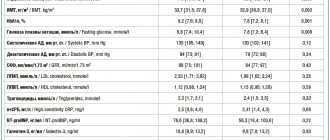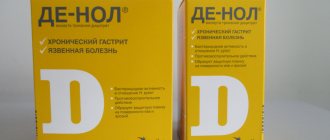Causes of malabsorption
More than 150 diseases associated with malabsorption are known1. These may be congenital malabsorption disorders (primary), or disorders that occur against the background of diseases of the small intestine and internal organs (secondary)4.
Digestion and absorption of nutrients in the intestine occurs as a result of a complex interaction between its motor, excretory, digestive and absorption functions. Various factors can disrupt these processes and affect absorption2.
The most common causes of malabsorption include:
- Celiac disease associated with a genetic feature - intolerance to gluten (the protein of some grains)4. When gluten products are consumed, autoimmune inflammation begins in the intestines1.
- Pancreatic enzyme deficiency. Inflammation of the pancreas (chronic pancreatitis) or surgery on it can lead to insufficient secretion of enzymes necessary for the digestion of proteins, fats and carbohydrates2,8. In severe forms, when less than 10% of gland cells perform their function, symptoms of malabsorption appear3.
- Bile deficiency. Normally, bile acids - components of bile - are involved in the digestion of fats to ensure their absorption from the intestine2. In diseases of the liver and gall bladder, there is a lack of bile in the intestinal lumen, which can interfere with the absorption of fats and fat-soluble vitamins3 (A, D, E, K)14.
- Chronic gastritis. In some forms of gastritis, the acidity of the stomach is significantly reduced. Under such conditions, its mucous membrane does not absorb iron and sometimes vitamin B12 well. Their deficiency contributes to the development of anemia3.
- Inflammation of the intestines (Crohn's disease). Inflammation of the intestinal wall can impair nutrient absorption6. Crohn's disease affects different parts of the intestine where certain substances are absorbed. Therefore, sometimes there is a deficiency of one or more food components, such as vitamin B12, calcium, magnesium or protein3.
- Bacterial overgrowth syndrome (SIBO) is the result of a disruption of the normal established “microbial ecology” of the small intestine5. In SIBO, it contains bacteria that normally live in the large intestine. Once in the upper gastrointestinal tract, these bacteria consume some of the macro- and microelements and contribute to the development of malabsorption. In addition, bacterial enzymes disrupt the exchange of bile acids and, consequently, the absorption of fats2.
The listed diseases can lead to problems with the skin, because it, like other organs, lacks nutrients due to malabsorption3. The skin is especially sensitive to a lack of iron1, zinc, essential fatty acids8, fat-soluble3 (A, K, E, D14) and water-soluble vitamins8 (B, C, PP)14.
to come back to the beginning
Symptoms of malabsorption
The “poor absorption” syndrome is almost always manifested by diarrhea3,4 - liquid or semi-liquid stool, which is excreted more than 3 times a day13. One of the features of the syndrome is steatorrhea, in which stool has an “oily” appearance and is difficult to wash off4.
Typically, malabsorption syndrome is suspected when weight loss occurs due to diarrhea14. But it is worth paying attention to its other signs that arise due to a deficiency of proteins, fats, carbohydrates, microelements and vitamins4, for example, symptoms of malnutrition of the skin, nails and hair12:
- dryness and roughness of the skin4;
- the appearance of cracks, redness4 and pigmentation14 on the skin;
- skin rash4;
- brittleness4 and slow growth of nails1;
- transverse grooves on nails1;
- thinning, thinning and dry hair1;
- baldness1.
to come back to the beginning
Treatment of malabsorption
To solve skin problems with malabsorption, it is important to replenish the nutritional deficiency, and for this, first of all, you need to eliminate the cause of the disorder. It is also necessary to restore bowel regularity, since diarrhea affects a person’s quality of life9.
If the doctor has determined which product is not absorbed or provokes malabsorption, it should be excluded from the diet9. If you have malabsorption, it is better to avoid foods that can aggravate the lack of substances necessary for the body and cause diarrhea9. Doctors recommend9:
- Drink no more than 1 serving of caffeinated drinks per day;
- limit sugar-sweetened drinks and fruit juices;
- Avoid candy and chewing gum containing sorbitol.
In many cases, treatment of the underlying disease and dietary modification are sufficient to combat diarrhea due to malabsorption, however, when these measures are not enough, loperamide-based antidiarrheals9, for example, Imodium® Express, can be used.10 The drug reduces intestinal motility, thereby increasing transit time (promotion) of its content. Loperamide promotes fecal retention and reduces the urge to defecate by increasing the tone of the anal sphincter10.
Imodium® Express is available in the form of lozenges that dissolve on the tongue in a few seconds and do not require drinking water10.
Imodium® Express is contraindicated for use in children under 6 years of age, in the 1st trimester of pregnancy (use in the 2nd and 3rd trimesters is possible strictly as prescribed by a doctor) and for the entire period of breastfeeding10. Imodium® Express should not be used if there is blood in the stool, with colitis, or in cases where slowing down peristalsis is undesirable due to the possible risk of developing serious complications10. Drugs to combat diarrhea should only be used after consultation with a doctor, as it is important determine its cause, and not just eliminate unpleasant symptoms5.
Often, skin problems for which a person turns to a dermatologist or cosmetologist turn out to be a manifestation of impaired functioning of internal organs4, for example, malabsorption. Treatment of intestinal “poor absorption” is aimed at eliminating its cause, eliminating precipitating factors and relieving common symptoms such as diarrhea5. In most cases, malabsorption syndrome is not a life-threatening condition, but serious complications can occur due to incorrect or delayed diagnosis5. Therefore, consultation with a specialist and treatment under his supervision is necessary.
The information in this article is for reference only and does not replace professional advice from a doctor. To make a diagnosis and prescribe treatment, consult a qualified specialist.
to come back to the beginning
Links[edit]
- ^ abcde "Malabsorption syndrome". MedlinePlus. Retrieved April 29, 2022.
- Okay, KD; Schiller, L.R. (1999). "Technical review of the assessment and treatment of chronic diarrhea." Gastroenterology
.
116
(6):1464–1486. DOI: 10.1016/s0016-5085(99)70513-5. PMID 10348832. - ^ a b c Bai J (1998). "Malabsorption syndromes." Digestion
.
59
(5): 530–46. DOI: 10.1159/000007529. PMID 9705537. S2CID 46786949. - health from a to z “Malabsorption syndrome”. Archived from the original on 2007-05-22. Retrieved May 10, 2007.
- Losowsky, M. S. (1974). Malabsorption in clinical practice
. Edinburgh: Churchill Livingstone. ISBN 0-443-01007-2. - Heidelbaugh, Joel J. (June 2013). "Proton pump inhibitors and the risk of vitamin and mineral deficiencies: evidence and clinical implications". Therapeutic Advances in Drug Safety
.
4
(3): 125–133. DOI: 10.1177/2042098613482484. ISSN 2042-0986. PMC 4110863. PMID 25083257. - Walker-Smith J, Barnard J, Bhutta Z, Heubi J, Reeves Z, Schmitz J (2002). "Chronic diarrhea and malabsorption (including short bowel syndrome): report of the Working Group of the First World Congress of Pediatric Gastroenterology, Hepatology and Nutrition." J. Pediatr. Gastroenterol. Nutr
. 35 Supplement 2: S98–105. DOI: 10.1097/00005176-200208002-00006. PMID 12192177. S2CID 10373517. - Gasbarrini G, Frisono M: Critical evaluation of malabsorption tests; in Dobrilla G, Bertaccini G (1986). Langman G (ed.). Problems and controversies in gastroenterology
. New York: Raven Pr. pp. 123–130. ISBN 88-85037-75-5. - Newnham ED (2017). "Celiac disease in the 21st century: Paradigm shifts in the modern era". J Gastroenterol Hepatol
(Review). 32 Supplement 1: 82–85. DOI: 10.1111/jgh.13704. PMID 28244672. - Bertomeu A, Ros E, Barragan V, Sachje L, Navarro S (1991). "Chronic diarrhea with normal stool and colon studies: organic or functional?". J. Clin. Gastroenterol
.
13
(5):531–6. DOI: 10.1097/00004836-199110000-00011. PMID 1744388. - Reading N, Krejs G, Reading M, Sant Ana S, Morawski S, Fordtran J (1980). "Chronic diarrhea of unknown origin". Gastroenterology
.
78
(2):264–71. DOI: 10.1016/0016-5085 (80) 90575-2. PMID 7350049. - ^ abc Thomas P., Forbes A., Green J., Howdle P., Long R., Playford R., Sheridan M., Stevens R., Valori R., Walters J., Addison G., Hill P., Brydon G. (2003). "Manual for the Study of Chronic Diarrhea, 2nd Edition". Intestines
. 52 Suppl 5(90005): v1–15. DOI: 10.1136/gut.52.suppl_5.v1. PMC 1867765. PMID 12801941.
Bibliography
- Pozdnyakova O. N., Nemchaninova O. B., Sokolovskaya A. V., Eremina T. A., Osipenko M. F., Lykova S. G., Reshetnikova T. B., Evstropov A. N. Extraintestinal (dermatological ) manifestations of malabsorption syndrome and celiac disease. Experimental and clinical gastroenterology. 2020;182(10): 107–111.
- Keller J, Layer P. The Pathophysiology of Malabsorption. Viszeralmedizin. 2014;30(3):150-154. – URL: https://www.ncbi.nlm.nih.gov/pmc/articles/PMC4513829/
- Tkach S.M., Sizenko A.K. Malabsorption syndrome: new classification, main causes and mechanisms of development. Current gastroenterology. 2012. No. 3 (65). pp. 114-121. – URL: https://www.vitapol.com.ua/user_files/pdfs/gastro/gas65isgastro3-12-16.pdf
- Eremina T.A., Pozdnyakova O.N. Chronic dermatoses associated with malabsorption syndrome. Online publication “Medicine and Education in Siberia” - No. 1 - 2012
- Zuvarox T, Belletieri C. Malabsorption Syndromes. . In: StatPearls [Internet]. Treasure Island (FL): StatPearls Publishing; 2021 Jan-. Available from: https://www.ncbi.nlm.nih.gov/books/NBK553106/
- Huang BL, Chandra S, Shih DQ. Skin manifestations of inflammatory bowel disease. Front Physiol. 2012 Feb 6;3:13.- https://www.ncbi.nlm.nih.gov/pmc/articles/PMC3273725/
- WGO-OMGE Practice Guideline: Malabsorption. 2005 – URL: https://www1.lf1.cuni.cz/~kocna/ginet/texty/g_malas.pdf
- Joel B Mason. Approach to the adult patient with suspected malabsorption. Official reprint from UpToDate. 2022 – URL: https://www.uptodate.com/contents/approach-to-the-adult-patient-with-suspected-malabsorption
- Joel B Mason. Overview of the treatment of malabsorption in adults. Official reprint from UpToDate. 2022 – URL: https://www.uptodate.com/contents/overview-of-the-treatment-of-malabsorption-in-adults?topicRef=4781&source=see_link
- Instructions for use of the drug Imodium®Express// Registration number N016140/01// RF GRLS. – URL: https://grls.rosminzdrav.ru/Grls_View_v2.aspx?routingGuid=fdbc42af-4580-4ecd-93d8-2e9a965c707a&t= (access date: 07/20/2021)
- Belousova O.Yu. Carbohydrate malassimilation syndrome in pediatric practice. Health of Ukraine, 2009. - URL: https://www.health-ua.com/pics/pdf/P_24_1/36-38.pdf
- Pathological physiology of the digestive system: educational method. allowance/E. N. Kuchuk, F. I. Vismont. – Minsk: BSMU, 2010. – 34 p.
- Martynov A.I., Kokorin V.A. Evidence-based internal medicine 2022: Diarrhea [Electronic resource] // Author's edition, 2022. – 1680 p. – URL: https://empendium.com/ru/chapter/B33.I.1.2.
- Chronic diarrhea syndrome in the practice of a therapist: examination tactics, basic principles of treatment: textbook. allowance / L. I. Butorova, G. M. Tokmulina. – M.: Prima Print, 2014. – 112 p. : ill. – ISBN 978-5-9905962-0-7
Content
- 1 Signs and symptoms 1.1 Gastrointestinal manifestations
- 1.2 Extraintestinal manifestations
- 1.3 Presentation
- 4.1 Classification







